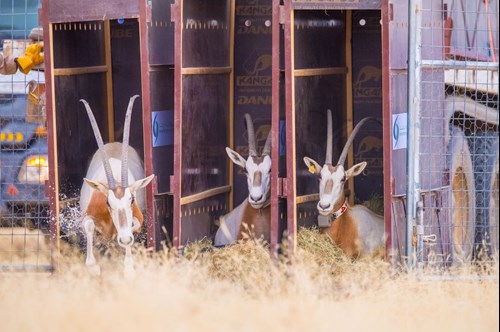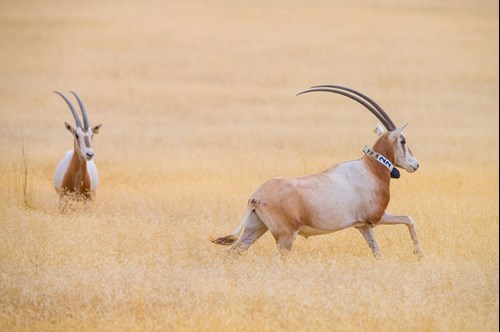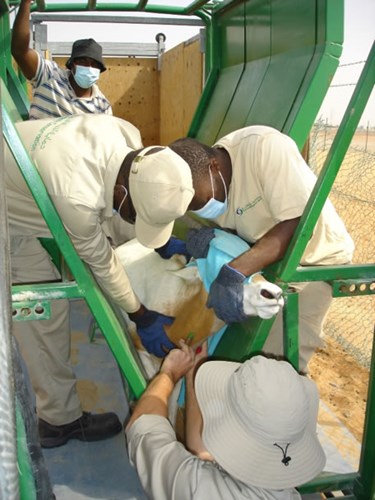An update from the scimitar-horned oryx reintroductions in Chad
11/02/2017 in Conservation
In the Oudi-Rime Oudi-Achim Game Reserve, 25 scimitar-horned oryx trot about their pre-release pen munching on the grasses of the Sahel, oblivious to just how important they are.

On the 16th of March, when a plane from Abu Dhabi landed in Chad carrying the first precious cargo of animals, it was the first time in over 25 years that this magnificent species set foot on Chadian soil. It also marked the true beginning of a project that is possibly the world’s most ambitious large mammal reintroduction. Recently we received fantastic news that the second wave of animals have arrived safely in Chad and are now waiting to be released. The first group which arrived in March have since been released and have offspring already.
It has, of course, taken a herculean effort led by the Environment Agency of Abu Dhabi in partnership with the Ministry of Environment and Fisheries Government of Chad, the Sahara Conservation Fund, the Smithsonian Conservation Biology Institute, the Zoological Society of London and Fossil Rim Wildlife Centre to get this far. There are so many logistical considerations: site surveys, veterinary care of the animals, building pre-release enclosures, the logistics of transportation, planning post-release monitoring and conducting community outreach. Multiple strands of research and action have come together in a big plan to get to the point where the animals can physically be moved back home. RZSS Wildgenes is extremely proud to play its small part in this plan through the genetic data it has generated.

Each member of scimitar-horned oryx captive population represents a unique repository of genetic diversity. Each animal carries a different set of genes, some of which (but we don’t know which ones) could help the whole population adapt in future. For example if it were to be challenged by an extreme event such as severe drought. It’s really important to ensure that genetic diversity is maximised in the release and preserved well in captivity, so that the population has this capacity for evolutionary resilience.

The work that we’ve conducted over 3000 miles away, here in chilly Edinburgh, involves hours of wielding a pipette in the lab and tapping away at bioinformatics analyses in front of a computer – and feels like a world away from the dusty plains of the Sahel where soon these animals will be running free. However, It’s amazing to know that this data will be used to support decisions about management of both the reintroduction and the newly formed “World Herd” of 3000 animals in AbuDhabi.
Until next time!
Helen
Featured Articles

An update from the Budongo Forest
19/04/2024 in Conservation

Edinburgh Zoo named best zoo in Scotland
15/04/2024 in Edinburgh Zoo

























Follow EZ